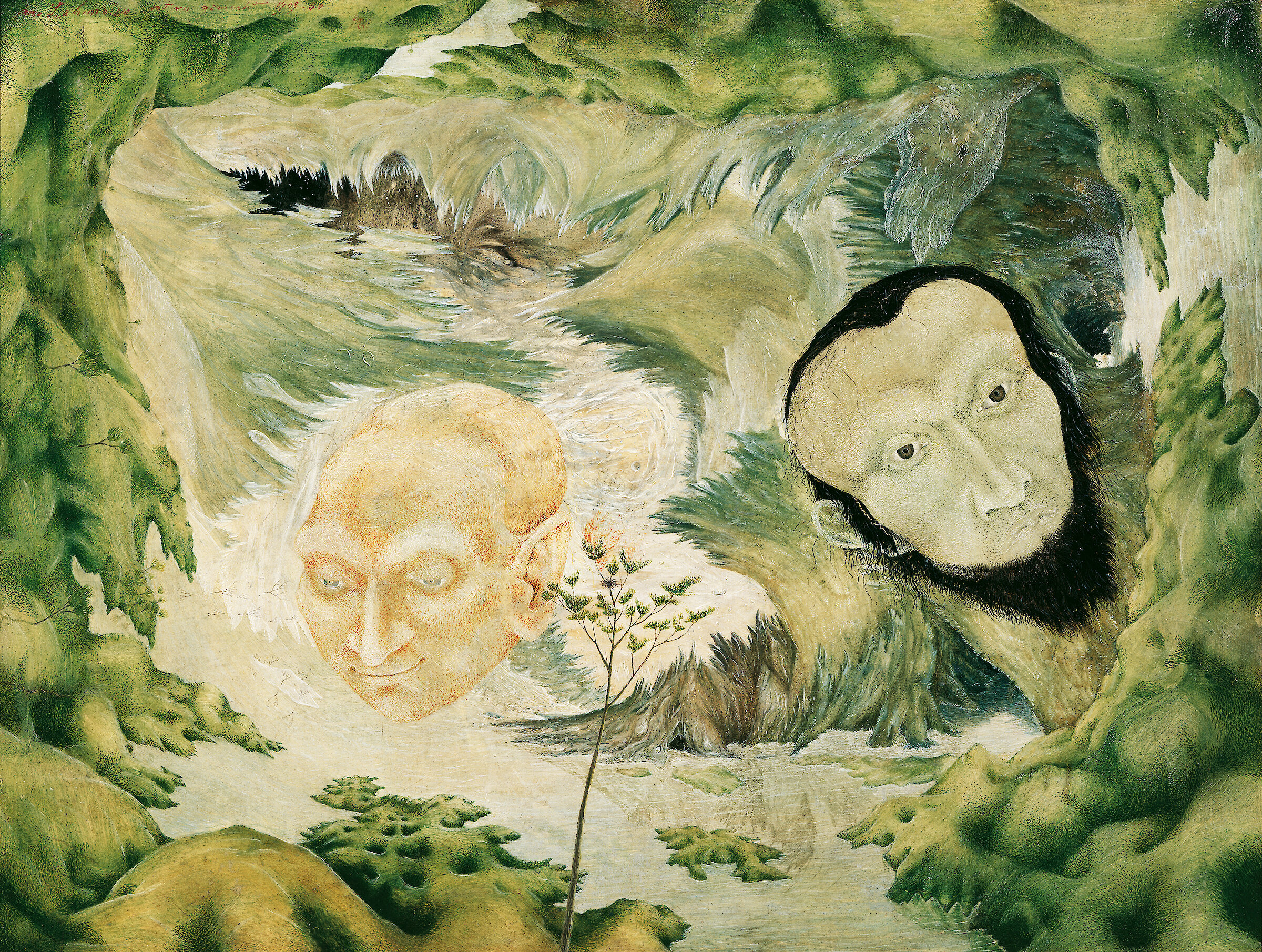Anton Lehmden

Anton Lehmden, Zwei Köpfe in einer Landschaft, 1949 – 50
Oil on fiberboard
43 x 57 cm, frame: 46 x 60 x 5 cm
Courtesy Artothek des Bundes, permanent loan at the Belvedere, Vienna
Like most members of the Vienna school of Fantastic Realism, Anton Lehmden was a student of Albert Paris Gütersloh. In 1948 after three years of study, Lehmden joined the Art Club, which Gütersloh had co-founded. There he met many like-minded artists early in his career, including Ernst Fuchs, Rudolf Hausner, and Wolfgang Hutter. With the last two, Lehmden was to take part in all of the important exhibitions of the Fantastic Realists.
“Where Lehmden is there is landscape,” Gütersloh once said. This had two sides to it: “The artist has lived for a long time in the countryside, and has sought it out again and again; since 1966, when he acquired Deutschkreutz in the Burgenland, he is again living in the country. And he is the one painter in the Vienna school of Fantastic Realism who chose landscape as his theme from the very beginning.”1
The work Zwei Köpfe in einer Landschaft (Two Heads in a Landscape) (1949 – 50) is from a very early phase in Lehmden’s career, and Gütersloh’s words can be verified here. The two heads are suspended in a landscape in which they are more or less embedded. The image is bordered by depictions of green hills that are interrupted at several points by water, creating the impression of a fantastic grotto or cave. This is all only partly naturalistic or oriented on reality, while the composition as a whole is not realistic. This picture can be seen as comprising four landscapes each seen from the perspective of each of the image’s four margins. In the center and with the heads, these four perspectives merge into a kind of maelstrom of water channels. It makes no difference which way the picture is turned, as there would always be an accurate depiction of a row of hills at the bottom, with or without a river and a tree. The total perspective in the image is not clear, and this leads to confusion. Then there are the two heads that either seem to be floating without bodies, or could be emerging from the maelstrom that is formed by the four landscapes. The theme here seems to be the conjunction of land and water, to show the great force that each of them has. Ultimately, in this early work Lehmden was already working on a lyrical or allegorical composition that defamiliarizes reality and yet still seeks a specific depiction. This is very like traditional Chinese painting, which Lehmden greatly admired. He himself describes his approach to painting as follows: “I make simple painting in production and clear painting in the depiction. A portable cave painting with expanded themes. Painting is the transformation of a neutral surface into a collection of observations, trains of thought about things seen, experienced, imagined, and recognized. This transformation cannot be achieved by realistic truisms nor by carefree off-the-cuff gestures.“2
This connection between depicting something real while consciously reimagining the theme and finding an independent perspective on landscape seems to be a key feature of Lehmden’s approach to figuration. This is also true in many ways of the other artists in the Vienna school of Fantastic Realism, and can also apply to other artists in this exhibition. The manner in which an objectifiable external world, existential questions, and traditions in painting are all brought together in a single picture can be seen as a kind of lowest common denominator in this exhibition and the various trends and positions on show here.
- Johann Muschik, Die Wiener Schule des Phantastischen Realismus, Vienna 1974, p. 80.
- Anton Lehmden, “Eine Portable Höhlenmalerei,“ in Die Phantasten, ed. Gesellschaft bildender Künstler Österreichs, Künstlerhaus Wien, Vienna 1990, p. 289.